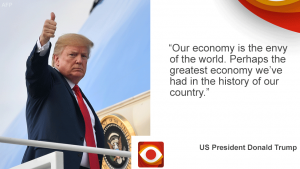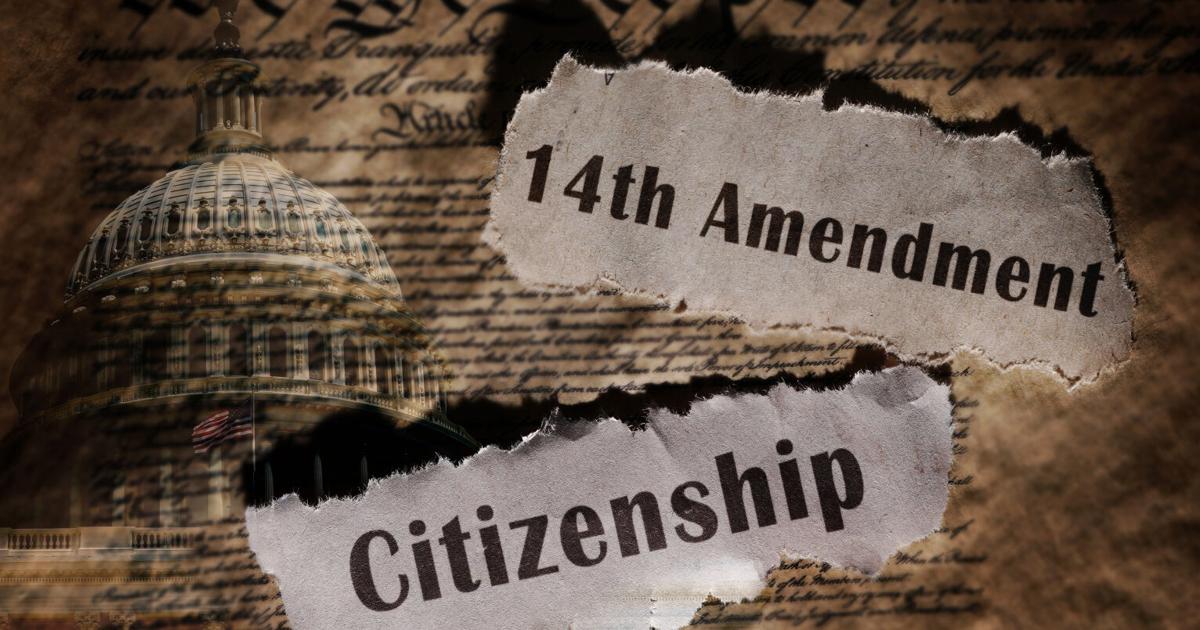(ThyBlackMan.com) While Democrats have pursued a policy largely of obstruction and impeachment, several pollsters, like Gallup, have found President Donald Trump’s approval rating to be on an upswing. Repulsion among swing voters at Democrats’ undying refusal to accept the results of the 2016 election likely plays a role in this uptick; this rallying behind Trump can be seen in massive impeachment-related fundraising numbers for his re-election campaign. However, the unrelenting strength of the US economy is also playing a critical role in Trump’s recent rise and will be a cornerstone in his pitch to voters for another term.
Indeed, a CNN poll found 76% of Americans view the economy as good, the highest rating in two decades. Remarkably, Democrats during last week’s debate refused to accept this reality with Joe Biden trying to argue that Americans don’t really like the economy and that “the middle class is getting killed.” Biden must have been confusing Trump’s economy with the one Americans endured during the Obama-Biden years.
By now, you likely know some of the key top-line statistics. Unemployment is at a 50-year low; for African-Americans, an all-time low. The stock market sits at a record high. Thanks to higher asset prices, income, and savings, Americans’ household net worth has increased by about $18 trillion since Trump took office. Apple’s CEO called our economy the “strongest in the world” while Trump’s job numbers have been called “the best of our lives.” 
Nonetheless, Democrats will try to downplay this era of economic prosperity and talk down our economy, primarily by pushing two economic narratives that are myths if not outright lies:
Democrat Myth #1: Trump is just riding Obama’s coattails
Reality: Trump’s economy these three years have been far stronger than most apolitical economists expected.
In December 2016, the Federal Reserve predicted the unemployment rate would be 4.5% at the end of 2019. Instead, it is 3.5%, which translates to 1.8-2 million additional jobs due to Trump’s economy exceeding expectations. Lower unemployment also came with a 0.5% rise in the labor force participation rate to 63.2%–it had fallen by 1.9% under Obama. The Trump labor market has been so strong that it has brought Americans who had given up on ever working again back into the labor market and into jobs; giving hope where hope was lost.
Similarly, real GDP today is 1.4% larger than expected by the Fed and independent economists when Trump took office, which is an additional $280 billion in annual output. That’s an additional $3,200 for an average family of four. This stronger growth has come thanks to better productivity as Trump’s tax cuts incentivized greater business investment. Annual productivity growth has averaged 1.4% under Trump, nearly doubling the 0.8% of the Obama expansion, which translates to greater capacity and potential wage growth.
In Obama’s final year in office, real disposable personal income rose a paltry 1.6%, barely half of the 3.1% growth seen over the past twelve months. Similarly, the manufacturing sector was stagnating during the latter Obama years, actually shedding 7,000 jobs in 2016. Obama even bemoaned it would take a “magic wand” to bring manufacturing jobs back. Well, manufacturing employment has grown by 530,000 under President Trump. Turns out, lower taxes, deregulation, and smarter trades work as well as a magic wand!
This economic strength has come even amid in a 1.6% rise in the personal savings rate, which translates to another $400 billion in annual savings vs the late-2016 pace. These increased savings will help more Americans attain retirement, handle unexpected bills, or make large purchases like a house or car in the future, laying the groundwork for future economic growth and safeguarding us from negative shocks.
The Trump economy is consistently exceeding Obama-era benchmarks.
Democrat Myth #2: Trump’s economy isn’t working for the middle class
Reality: The strength of the Trump economy and the tightness of our labor market are disproportionately helping working and middle-class Americans. Non-supervisors are consistently receiving faster wage growth than their bosses, most recently at 3.7% vs 3.0%. Indeed, nonsupervisory pay is running at its fastest pace in over a decade.
Similarly per the Atlanta Fed, those in the bottom quartile of pay have seen faster wage than those at the top during every month of Trump’s Presidency (most recently at 4.5% v 3.5%). Data from Indeed also shows low-wage industries sporting the fastest wage growth. Since Trump took office, disposable personal income has risen by 16.0% while corporate profits after tax have risen by 13.8%.
Every group has done well in Trump’s economy, but workers, particularly those in the middle and working classes, have done the best. Trump has run a tight labor where there are more job openings than unemployed people, which forces companies to compete for workers, a paradigm shift from the Obama and Bush economies when workers fought for jobs, giving them little bargaining power.
With workers harder to find, companies now have to pay up for talent, boosting wages and transferring income from capital to labor, which will also help reduce inequality. Add to this tight labor market, more restrictive immigration and trade policy that encourages domestic production, and the need for American workers has never been greater.
The Trump economy is working for working people.
Ultimately, Democrats and the media can try to spin and mischaracterize the Trump economy all they want, but paychecks don’t lie. And American paychecks are delivering better news to more people than at any time in a generation. This is a tremendous period of American prosperity, and if we stay the course, there’s no reason it can’t continue
Back in 1980, Ronald Reagan asked America, “Are you better off than you were four years ago?” In November 2020, America will be asked the same question and based on the economic data in hand, the answer will be a resounding “yes.”
Written by Scott Ruesterholz
Official website; https://twitter.com/Read_N_Learn

















Leave a Reply